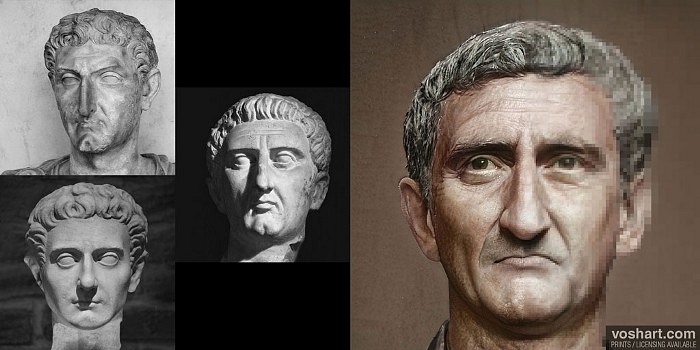A series of facial reconstructions of Roman emperors from the Nerva-Antonine Dynasty (96 CE-192 CE), the Year of the Five Emperors (193 CE) and the Severan Dynasty (193-235 CE). These photorealistic representations are only best guesses at how their subjects may have appeared, based on literary and artistic evidence. Some artistic license has been taken to fill in certain details that ancient sources failed to note. Part of "Appearance of the Principate", a larger series by Daniel Voshart, made using Photoshop and Artbreeder, a neural net tool.
Image Gallery
Nerva (Artistic Facial Reconstruction)
Nerva (r. 96-98 CE) came to power after the assassination of Domitian, who had no heirs. Prior to becoming emperor, Nerva had a long career serving under the Julio-Claudian and Flavian dynasties. He is known as the first of the Five Good Emperors (Nerva, Trajan, Hadrian, Antoninus Pius, and Marcus Aurelius). Although his reign was stable and he was less dictatorial than his predecessor, Nerva was never particularly popular. After serving a mere 16 months, Nerva voluntarily stepped down and relinquished the title of Roman emperor to his adoptive son Trajan (r. 98-117 CE).
Pictured alongside the reconstruction are the busts and statuary used as references. These include the Uffizi Gallery bust, the National Museum of Rome bust, and the bust from the Römisch-Germanisches Museum, Cologne.

